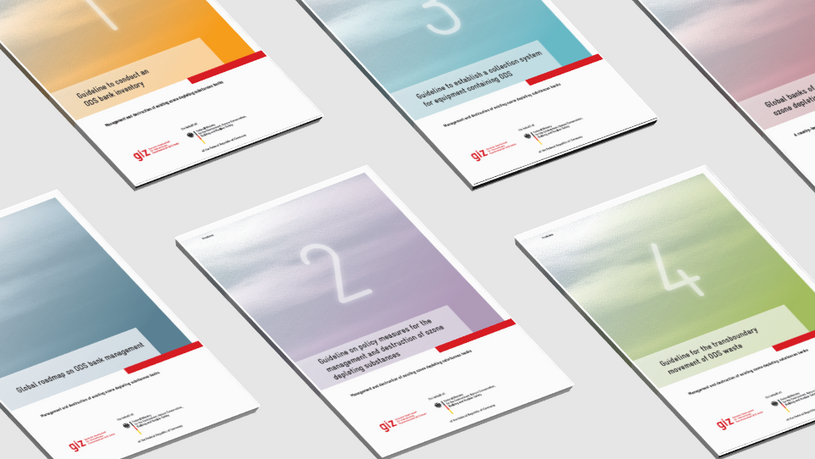The publication series focuses on the management and destruction of existing ozone depleting substances banks including a global roadmap and country-level estimate for ODS banks as well as guidelines on ODS bank inventories, policy measures, establishing a collection system for ODS banks equipment and transboundary movement of ODS waste.
An important source which depletes the ozone layler has largely been neglected in the past: emissions from ozone depleting substances (ODS) banks. Large banks have accumulated globally by the excessive use of ODS, which is found in old refrigerators, insulation foam or cylinders. Banks are defined as the „total amount of substances contained in existing equipment, chemical stockpiles, foams and other products not yet released to the atmosphere“ (IPCC/TEAP, 2005).
As neither the Montreal Protocol nor any other international environmental convention regulates the management and destruction of existing ODS banks, it is each country’s own responsibility to establish a successful ODS bank management scheme to handle this important source of emissions.
Global roadmap on ODS banks management (EN / ES)
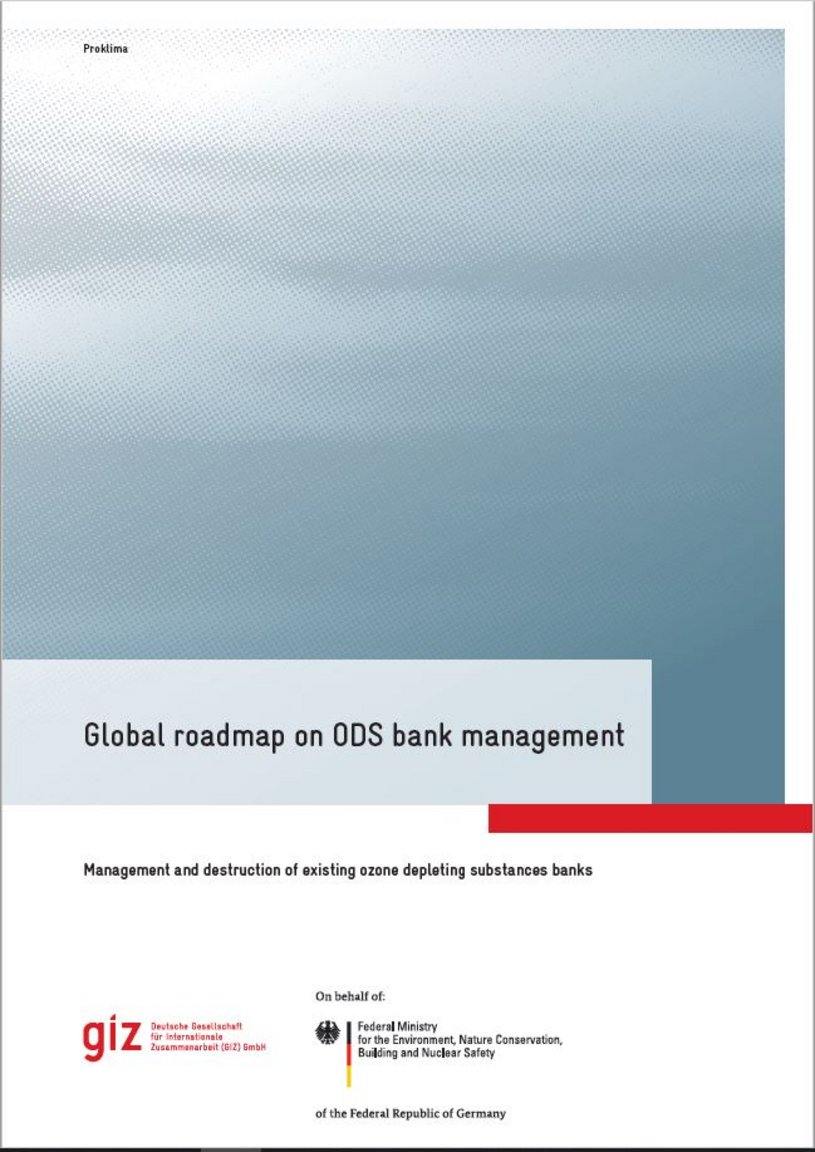
Global roadmap on ODS bank management (EN / ES)
This global roadmap provides information on key processes in this sector and gives guidance to policy-makers, e.g. national ozone officers and policy-makers from the waste sector, on developing strategies for successful management of ozone depleting substances (ODS) banks. Furhtermore, the paper presents a decision tree to assist in taking the right decisions concerning ODS bank management.
Link Global roadmap on ODS bank management
Guideline to conduct an ODS bank inventory (EN / ES)
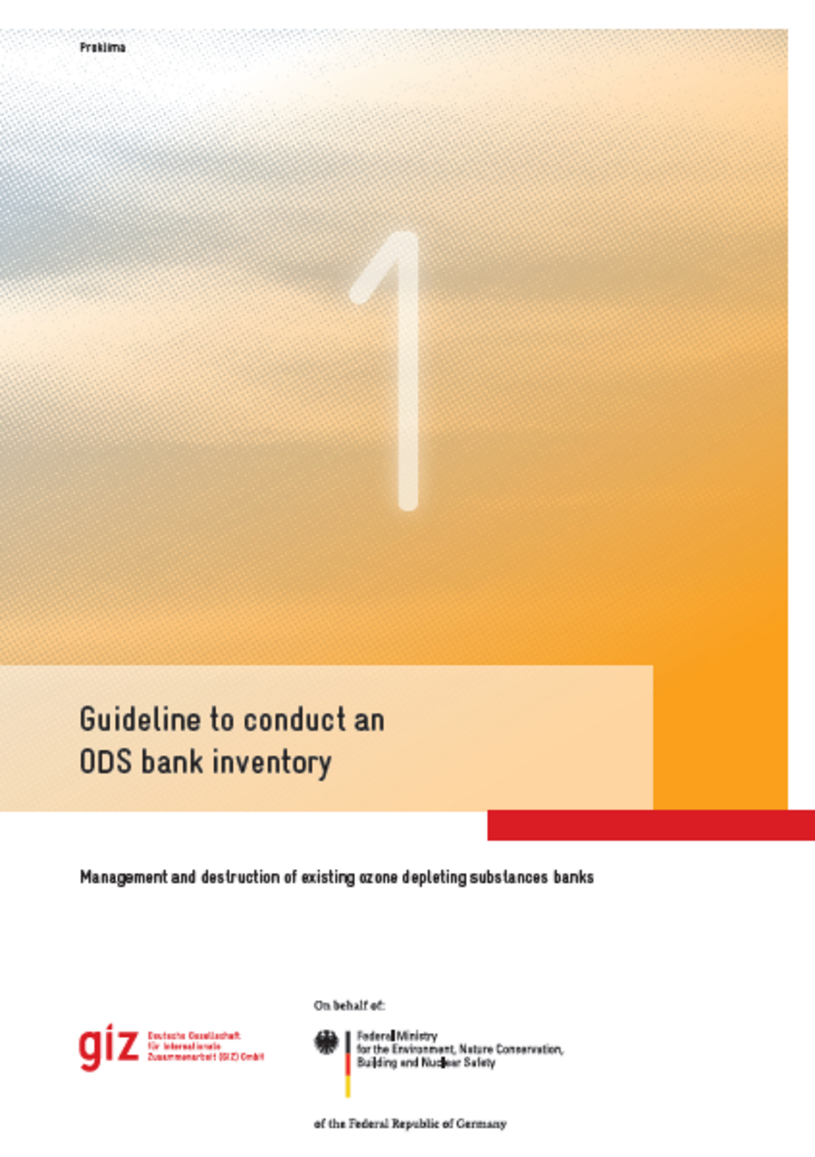
Guideline to conduct an ODS bank inventory
This guideline is intended for inventory compilers involved in quantifying the amount of ozone depleting substances (ODS) banks in their country and, based on this, quantifying the mitigation potential. A sound understanding of ODS banks on the country level is the basis for any action and policy decisions in the field of ODS bank management.
This step-by-step guideline presents two pragmatic approaches for assessing current ODS banks as a basis for future forecasts, reduction targets and policy actions:
- Equipment approach and
- Chemical consumption approach.
Link Guideline to conduct an ODS bank inventory
Guideline on policy measures for the management and destruction of ozone depleting substances
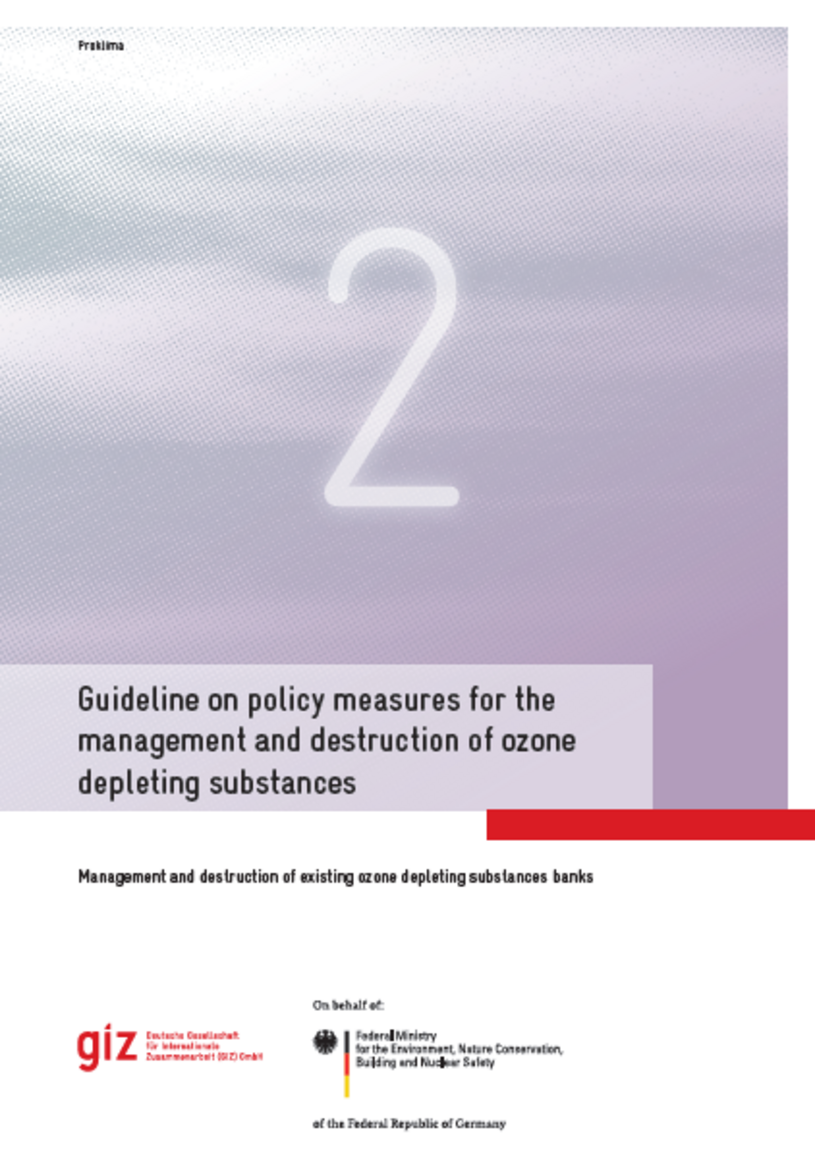
Guideline on policy measures for the management and destruction of ozone depleting substances
Creating a suitable, country-specific policy framework is essential for any ODS management scheme to be successful. This guideline presents a range of measures (regulatory, fiscal and non-regulatory measures) that can prevent the accumulation of and emissions from ODS banks. The guideline also shows a way to choose the appropriate option or a bundle of possible options tailored to conditions within the country and depending on the targeted sector or government objective.
Link Guideline on policy measures for the management of ozone depleting substances
Guideline to establish a collection system for equipment containing ODS
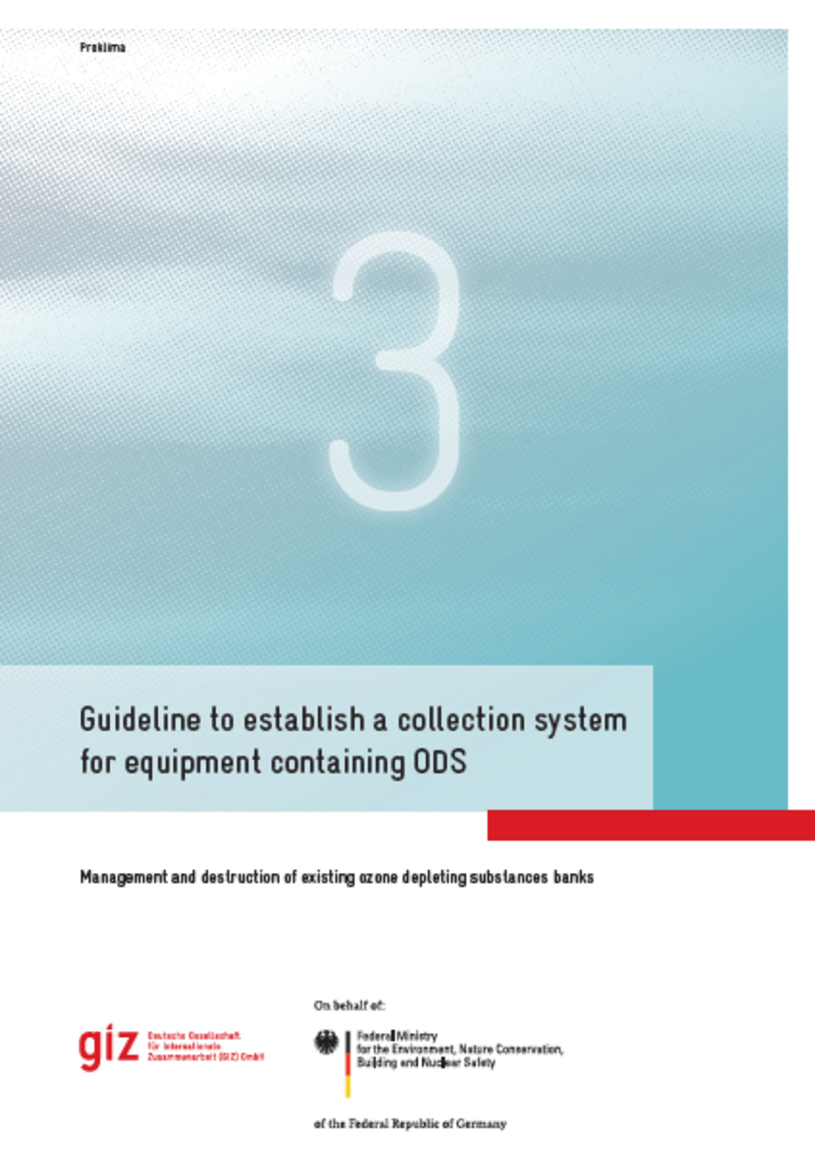
Guideline to establish a collection system for equipment containing ODS
This guideline focuses on the collection of ODS containing equipment. It provides practical guidance for national ozone officers (NOO), policy makers from the waste sector and other stakeholders. As decommissioned ODS containing equipment is classified as Waste Electrical and Electronic Equipment (WEEE), this guideline’s recommendations are valid for the collection of WEEE in general. However, this guideline also includes specific aspects related to ODS.
Link Guideline to establish a collection system for equipment containing ODS
Guideline for the transboundary movement of ODS waste
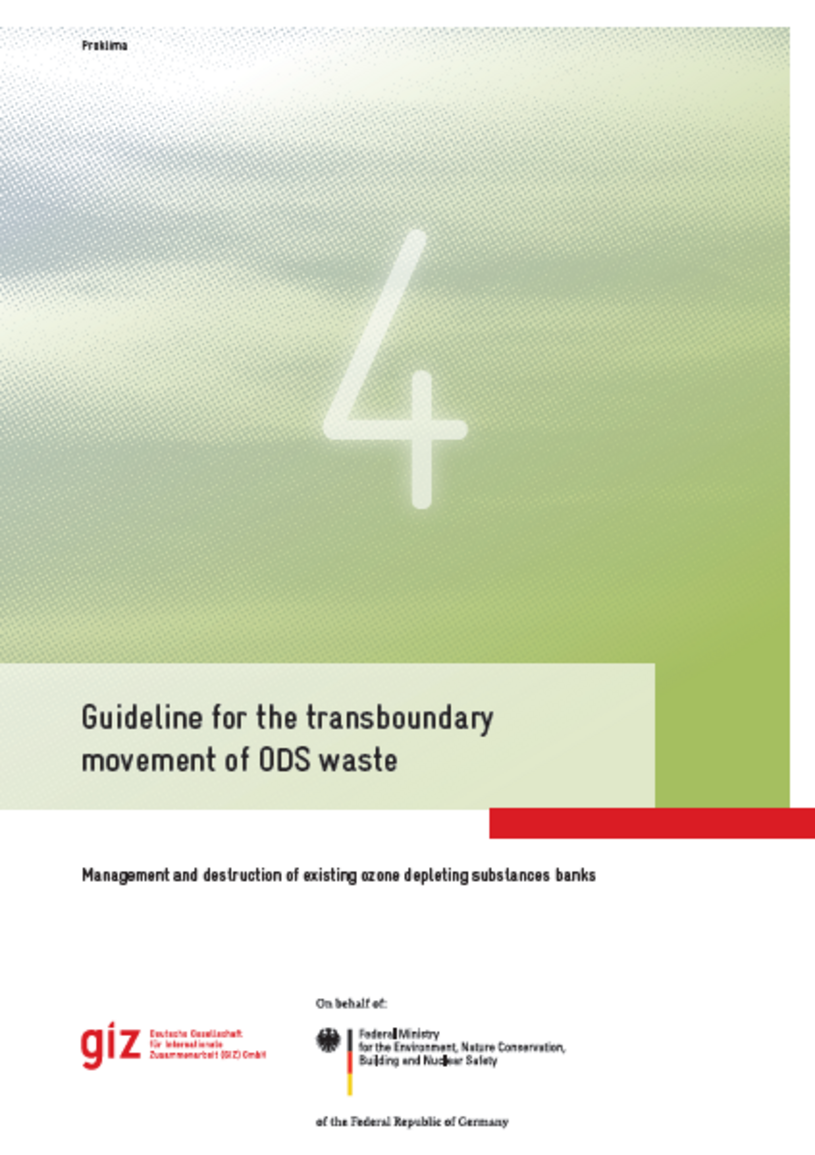
Guideline for the transboundary movement of ODS waste
As hazardous substances, ODS wastes fall under the Basel Convention on the control of transboundary movements of hazardous wastes and their disposal. This guideline was developed for National Ozone Units (NOUs) considering the export of ODS for destruction as part of their ODS management. The guideline links the topics of the Montreal Protocol on Substances that Deplete the Ozone Layer with the Basel Convention and provides practical information on how to conduct transboundary movements (TBMs) of ODS waste.
Link Guideline for the transboundary movement of ODS waste
Global banks of ozone depleting substances: A country-level estimate
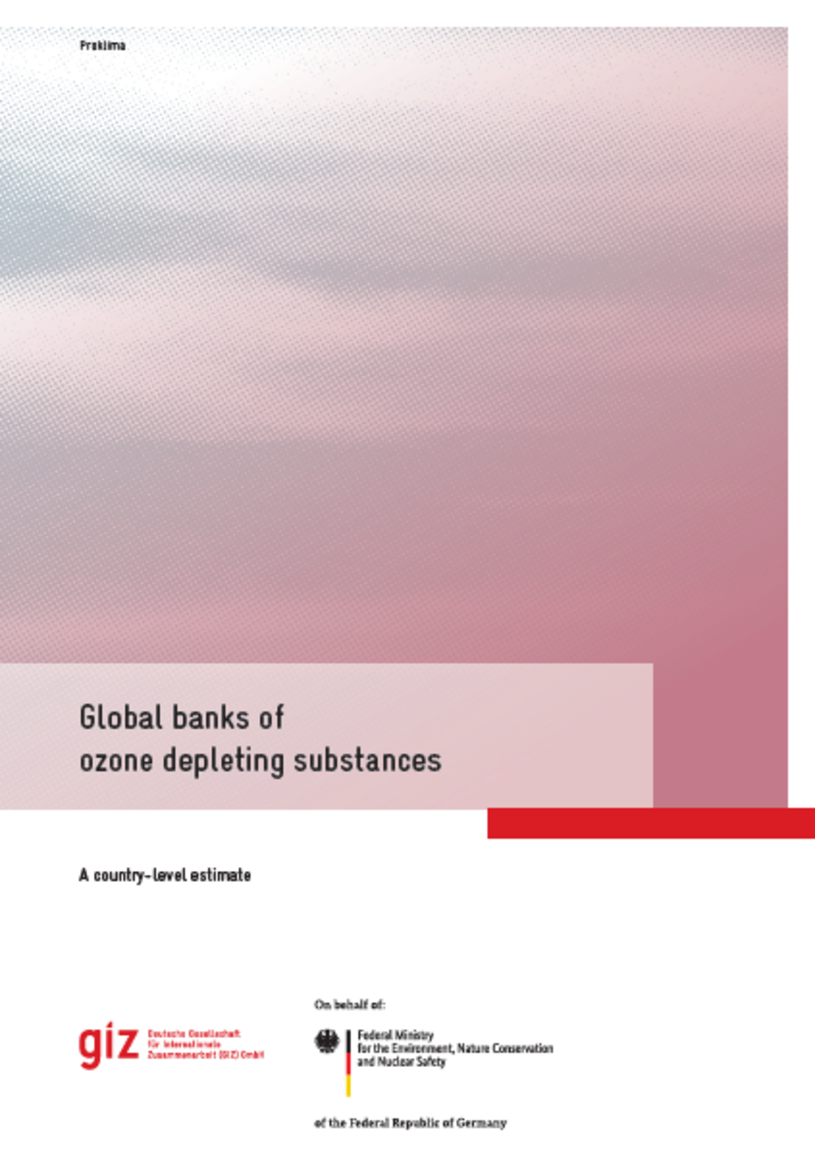
Global banks of ozone depleting substances - A country-level estimate
This paper aims to assess the climate impact of the existing ODS bank based on a country-level estimate and illustrates the magnitude of potential emission savings achieved by suitable measures to collect and destroy ODS banks. The results of this analysis together with the lessons learned from the other project activities are used to develop international guidance on ODS bank management.
This is the second version of this paper, published after the completion of an external peer review.
Link Global banks of ozone depleting substances - A country-level estimate

Guideline to conduct an ODS bank inventory
This guideline is intended for inventory compilers involved in quantifying the amount of ozone depleting substances (ODS) banks in their country and, based on this, quantifying the mitigation potential. A sound understanding of ODS banks on the country level is the basis for any action and policy decisions in the field of ODS bank management.
This step-by-step guideline presents two pragmatic approaches for assessing current ODS banks as a basis for future forecasts, reduction targets and policy actions:
- Equipment approach and
- Chemical consumption approach.
Global roadmap on ODS banks management (EN / ES)

Global roadmap on ODS bank management (EN / ES)
This global roadmap provides information on key processes in this sector and gives guidance to policy-makers, e.g. national ozone officers and policy-makers from the waste sector, on developing strategies for successful management of ozone depleting substances (ODS) banks. Furhtermore, the paper presents a decision tree to assist in taking the right decisions concerning ODS bank management.
Link Global roadmap on ODS bank management
Link Guideline to conduct an ODS bank inventory

Global roadmap on ODS bank management (EN / ES)
This global roadmap provides information on key processes in this sector and gives guidance to policy-makers, e.g. national ozone officers and policy-makers from the waste sector, on developing strategies for successful management of ozone depleting substances (ODS) banks. Furhtermore, the paper presents a decision tree to assist in taking the right decisions concerning ODS bank management.

Guideline to establish a collection system for equipment containing ODS
This guideline focuses on the collection of ODS containing equipment. It provides practical guidance for national ozone officers (NOO), policy makers from the waste sector and other stakeholders. As decommissioned ODS containing equipment is classified as Waste Electrical and Electronic Equipment (WEEE), this guideline’s recommendations are valid for the collection of WEEE in general. However, this guideline also includes specific aspects related to ODS.

Global banks of ozone depleting substances - A country-level estimate
This paper aims to assess the climate impact of the existing ODS bank based on a country-level estimate and illustrates the magnitude of potential emission savings achieved by suitable measures to collect and destroy ODS banks. The results of this analysis together with the lessons learned from the other project activities are used to develop international guidance on ODS bank management.
This is the second version of this paper, published after the completion of an external peer review.
Link Global roadmap on ODS bank management
Link Guideline to establish a collection system for equipment containing ODS
Link Global banks of ozone depleting substances - A country-level estimate
Guideline to conduct an ODS bank inventory (EN / ES)

Guideline to conduct an ODS bank inventory
This guideline is intended for inventory compilers involved in quantifying the amount of ozone depleting substances (ODS) banks in their country and, based on this, quantifying the mitigation potential. A sound understanding of ODS banks on the country level is the basis for any action and policy decisions in the field of ODS bank management.
This step-by-step guideline presents two pragmatic approaches for assessing current ODS banks as a basis for future forecasts, reduction targets and policy actions:
- Equipment approach and
- Chemical consumption approach.
Link Guideline to conduct an ODS bank inventory
Guideline on policy measures for the management and destruction of ozone depleting substances

Guideline on policy measures for the management and destruction of ozone depleting substances
Creating a suitable, country-specific policy framework is essential for any ODS management scheme to be successful. This guideline presents a range of measures (regulatory, fiscal and non-regulatory measures) that can prevent the accumulation of and emissions from ODS banks. The guideline also shows a way to choose the appropriate option or a bundle of possible options tailored to conditions within the country and depending on the targeted sector or government objective.
Link Guideline on policy measures for the management of ozone depleting substances
Guideline to establish a collection system for equipment containing ODS

Guideline to establish a collection system for equipment containing ODS
This guideline focuses on the collection of ODS containing equipment. It provides practical guidance for national ozone officers (NOO), policy makers from the waste sector and other stakeholders. As decommissioned ODS containing equipment is classified as Waste Electrical and Electronic Equipment (WEEE), this guideline’s recommendations are valid for the collection of WEEE in general. However, this guideline also includes specific aspects related to ODS.
Link Guideline to establish a collection system for equipment containing ODS
Guideline for the transboundary movement of ODS waste

Guideline for the transboundary movement of ODS waste
As hazardous substances, ODS wastes fall under the Basel Convention on the control of transboundary movements of hazardous wastes and their disposal. This guideline was developed for National Ozone Units (NOUs) considering the export of ODS for destruction as part of their ODS management. The guideline links the topics of the Montreal Protocol on Substances that Deplete the Ozone Layer with the Basel Convention and provides practical information on how to conduct transboundary movements (TBMs) of ODS waste.
Link Guideline for the transboundary movement of ODS waste
Global banks of ozone depleting substances: A country-level estimate

Global banks of ozone depleting substances - A country-level estimate
This paper aims to assess the climate impact of the existing ODS bank based on a country-level estimate and illustrates the magnitude of potential emission savings achieved by suitable measures to collect and destroy ODS banks. The results of this analysis together with the lessons learned from the other project activities are used to develop international guidance on ODS bank management.
This is the second version of this paper, published after the completion of an external peer review.
Link Global banks of ozone depleting substances - A country-level estimate

Guideline on policy measures for the management and destruction of ozone depleting substances
Creating a suitable, country-specific policy framework is essential for any ODS management scheme to be successful. This guideline presents a range of measures (regulatory, fiscal and non-regulatory measures) that can prevent the accumulation of and emissions from ODS banks. The guideline also shows a way to choose the appropriate option or a bundle of possible options tailored to conditions within the country and depending on the targeted sector or government objective.
Link Guideline on policy measures for the management of ozone depleting substances

Guideline for the transboundary movement of ODS waste
As hazardous substances, ODS wastes fall under the Basel Convention on the control of transboundary movements of hazardous wastes and their disposal. This guideline was developed for National Ozone Units (NOUs) considering the export of ODS for destruction as part of their ODS management. The guideline links the topics of the Montreal Protocol on Substances that Deplete the Ozone Layer with the Basel Convention and provides practical information on how to conduct transboundary movements (TBMs) of ODS waste.
Link Guideline for the transboundary movement of ODS waste
These papers are part of the project ‘Management and Destruction of Existing Ozone Depleting Substances Banks’ funded by the German Federal Ministry for Environment, Nature Conservation and Nuclear Safety (BMU) under its International Climate Initiative (IKI) and implemented by the Deutsche Gesellschaft für Internationale Zusammenarbeit (GIZ) GmbH.

